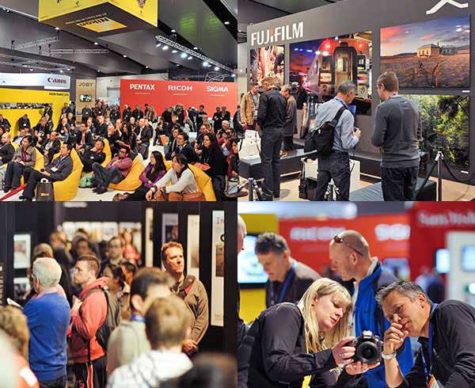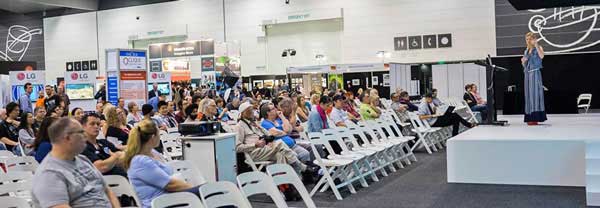It appears that rather than ‘firing up’ as we were led to believe in preparing a recent story, the IDEA board has embarked on a two-stage strategy to wind down the industry association.

The first stage is to exhaust the remaining funds by dollar-for-dollar sponsorship of five not-to-be-disclosed ‘Project 2020’ promotions, each to a maximum IDEA contribution of $50,000.
The second stage is to shut up shop at the next AGM in November – having already signalled the intent to close down IDEA at the previous AGM ‘after funds held have been invested in the industry (disbursed)’. The strategy has been in place since at least November last year. Yet today’s letter from long-serving president James Murray seems to imply no decision has yet been taken: ‘If it is evident that there is no appetite for members to support IDEA initiatives, and there is no value proposition which resonates with members or potential members, the board will consider what that means at that time, and possibly the windup of IDEA,’ he wrote in his Project 202o letter.
Another board member we have spoken to was unequivocal in stating that this is the course the association is taking.
– And Minutes of the last AGM, mentioned above, state: ‘… Following Project 2020 and disbursement of existing funds held at Macquarie Bank, PMK Auditors will be tasked to close Imaging and Digital Entertainment Association Limited in accordance with the association’s constitution.’ The motion was carried. Apparently under the association’s constitution, winding down IDEA is more constitutionally straightforward once it is effectively broke (‘disbursement of existing funds’) and without a revenue stream. Here’s James Murray explaining the apparent contradiction:
‘There has been no stand-alone motion to close IDEA, so there is no “done deal”. If a motion is made to close the association and carried at this year’s AGM (and I expect the AGM will be prior to funds being fully disbursed) then the appointed auditors would proceed with the closure, in accordance with the constitution, irrespective of the funds left over or not.
‘The point noted in the motion in reappointing the auditors last year, was the task of association closure, if the association has no further funding.’ (JM’s emphasis). ‘This is a very different motion to close the association with funds in reserve. This was quite clear for members attending and readers of the AGM minutes to view.’
It is not known whether ‘disbursement of existing funds’ to successful Project 2020 recipients has already taken place, but it would appear the financial commitments have already been made. The original schedule was for events to take place from March to May, with disbursements by the end of the financial year, June 30. Covid 19 has interfered with this schedule.
Given IDEA is unlikely to have any new initiatives for members to support (whether they wanted to or not); has just used up its resources; has been inactive for the past five years; and has only seven or so remaining members (four of which are on the board), the winding up of what has been transformed in a few short months from an organisation with a useful amount of cash in hand to an unfunded husk, becomes a logical imperative.
The question will remain, however, whether this is the best possible outcome for the industry?

Closed shop?
Inside Imaging has been told that at least four of the five successful Project 2020 projects are proposals from companies employing the four IDEA directors. In previous discussions with members of the IDEA board we have been told the sponsorships were awarded to Nikon, Kayell, Leica and CR Kennedy, and when we published this there was no request for correction. Inside Imaging does not imply that there is any impropriety in the awarding of these sponsorships to the directors’ companies, only that we have been told that the sponsorships have been awarded to them.
When we sought details for the forthcoming promotional events – now scheduled to start in August – James Murray somewhat belatedly drew the ‘commercial-in-confidence’ card: ‘IDEA is a sponsor of the events and so we can’t disclose the members specific activity. However they vary from workshops and seminars on unique camera related activities/experiences, to awareness of photographers using real cameras at key moments which cannot be captured on a mobile device.’
We asked James if IDEA thought the objective of Project 2020 – to turn the tide in Australia on the global adoption of smartphones as cameras – was a tad unrealistic. (the board members themselves probably use smartphones as their everyday camera, as do most people in the photo industry!) We also asked what measures were in place to measure the return on the $1 million Project 2020 investment:
‘Great question!’ he said.
‘However we have to believe we can make a small difference, and even a fraction of a percent of smartphone users choosing to take the inspired step to using a camera will add significant revenue to the industry.
‘I believe shifting the “snap shooter” is a tougher task, the smartphone convenience is irresistible for users. What we need to develop is the current climate of consumers displaying love of image capture, it’s never been greater and the often voiced headline “more photos are being taken now than ever before” is quite true. How to move from “snap shooting” to photography and video (content creation)? We also all know the satisfaction from the smartphone image is acceptable to many users, but equally we have all had that moment of showing the equivalent picture taken on a camera, and the seemingly satisfied smart phone “snapper” surprised that a better quality picture is achievable.
‘That’s the moment we need to achieve greater prevalence with, the experience of true photography over simple image capture. While our target is the smartphone user, I also suspect many of these users have a camera in their cupboard from the last 6-8 years which isn’t being used, if we can reignite their passion they will reengage or upgrade, or at least become an advocate within their community and bring newcomers.
‘A small impact, a small shifting the dial towards cameras and photography will be success!’
The Project 2020 letter makes a virtue out of IDEA’s inactivity over the past five years, presenting it as a strategy to preserve industry funds. Apart from increasingly meagre Grapevine newsletters, which have stopped completely without announcement, IDEA has done nothing of note for the industry since 2015.
‘There has been a complete focus on preserving the recovered financial position of IDEA since 2015, minimizing all expense and I thank the directors for making facilities available for meetings and Eve Phillips for continuing to contract to IDEA at reduced capacity,’ wrote James Murray.
We asked Paul Curtis, former PICA executive director and show director for around 20 years, whether an industry association without someone in the role of initiating and implementing activities was a viable model.
‘Well, if you don’t do anything, you certainly don’t need to spend anything, but then you have to ask; why exist?
‘I wasn’t a cost factor,’ he said. ‘I was a rain-maker. Every event I directed brought in huge profits for the industry, up to a million dollars a show. These profits were shared with the professional photographer and dealer organisations to ensure the industry as a whole got the maximum benefit.
‘We spent it on radio, television and newspaper campaigns, such as “Print or Lose it”, the benefits of hiring professionals, “The Celebrity Photographer of the Year”, Channel Nine photo competitions and the like. We were in all these media on a weekly basis. Our weekly syndicated newspaper column, written by Keith Shipton. appeared in more than a hundred newspapers. And of course, we spent up big on supporting education for the industry.
‘But I was lucky. I was working with highly active, creative and motivated volunteer teams encompassing retailers, professional photographers and distributors. Most importantly, for two decades I was backed by a dynamically lead board of directors.
‘I was never employed by PICA. I wish I had been. Let’s see, that’s 20-odd years of a company car, holiday and sick pay, plus of course, superannuation and pension. That would have been nice. However, my company was retained on an annual renewable contract with none of these benefits. Nor would PICA directors give their personal guarantees required for the necessary television advertising, venue and personal liability insurance contracts, so I also had to take on that personally. I risked my house and was always mindful that a previous photo industry entrepreneur had already lost his.
‘Could things have carried on? Yes, they could, but not in the same format. Different strategies were needed. To develop these, we needed dynamic leadership with fire in its belly. After all, other industry bodies, both here and overseas, have made successful transitions. Why couldn’t we?’
– What do you think?





Be First to Comment